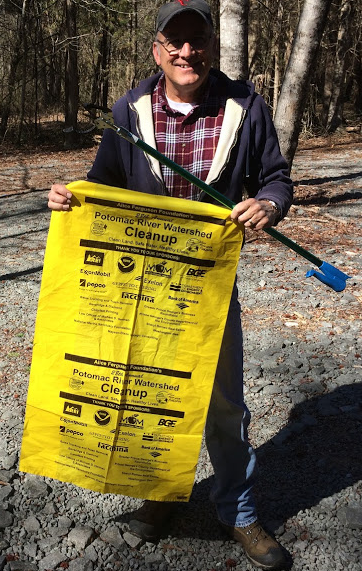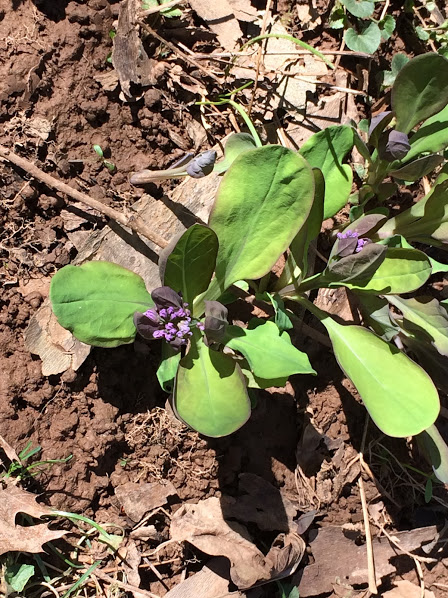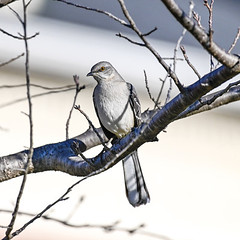Archive for the ‘Streams, Trees & Wetlands’ Category
Renewing the “Adoption” of Cedar Run
 As part of the mission of the Prince William Conservation Alliance “to explore, enjoy, and protect our natural areas, and increase community involvement in stewardship opportunities,” we recently renewed our commitment to adopt the reach of Cedar Run adjacent to Merrimac Farm.
As part of the mission of the Prince William Conservation Alliance “to explore, enjoy, and protect our natural areas, and increase community involvement in stewardship opportunities,” we recently renewed our commitment to adopt the reach of Cedar Run adjacent to Merrimac Farm.
We partner with the Prince William Soil and Water Conservation District. It has an “Adopt-a-Stream” program, where volunteers agree to a two-year commitment to clean litter from a stream segment.
Many of PWCA’s members and friends recognize Cedar Run as the stream whose fertile flood plain provides the home for the beautiful bluebells and other wildflowers that flourish there.
We’ve already done our first clean-up for the year. We’re happy to report the litter along Cedar Run’s banks and floodplain has been removed.
As of February 27, the bluebells were already popping up, getting ready for the April 8 Bluebell Festival!
Stay tuned for opportunities to help keep Cedar Run clean, just one small way PWCA demonstrates our commitment to protect watersheds in Prince William County.

PWCA Comments on Virginia’s Phase II Chesapeake Bay Water Improvement Plan
 Over the last 300 years, Prince William County has damaged its streams and polluted its waters. We have removed the natural forest cover, used creeks as sewers for sewage wastes, and piped excessive runoff from our roads directly into our waterways.
Over the last 300 years, Prince William County has damaged its streams and polluted its waters. We have removed the natural forest cover, used creeks as sewers for sewage wastes, and piped excessive runoff from our roads directly into our waterways.
Not surprisingly, many of our lakes and streams are classified as “impaired” by the Virginia Department of Environmental Quality.
The Clean Water Act requires us to restore our natural streams to “fishable and swimmable” status. If we clean up the local waterways, then Prince William also will do its part to restore the Chesapeake Bay. After all, polluted water from Prince William flows downstream via the Potomac River to the bay. The solution to Save the Bay is for every jurisdiction upstream, even in West Virginia and New York, to clean up their local waterways.
The legal deadline to restore the health of the Chesapeake Bay is now the year 2025, so we have about a dozen years to finish the job that we started when Virginia signed the Chesapeake Bay Agreement in 1983. Continue reading
There is no such thing as a dead tree
Guest post by Harry Glasgow
 In the forest, in autumn, an acorn drops from an oak. Soon, a bushy-tailed squirrel finds it and obeys an ageless urge to bury it to be dug up later during the spare oncoming winter. Soon forgotten by the squirrel, it remains buried through the winter, and begins to germinate the following spring.
In the forest, in autumn, an acorn drops from an oak. Soon, a bushy-tailed squirrel finds it and obeys an ageless urge to bury it to be dug up later during the spare oncoming winter. Soon forgotten by the squirrel, it remains buried through the winter, and begins to germinate the following spring.
In several years, the acorn develops into a sapling, and begins the struggle for survival. It must compete with other trees for its share of sunlight, nutrients from the soil, and water. Its leaves are bigger than those of its parents so that it can devote more energy to absorbing the necessary light and carbon dioxide than the adult trees, thus promoting faster growth.
As it grows, more branches sprout with more leaves, and it is steadily gaining in the struggle for space. Soon, birds begin to explore the sapling for insects, and for nesting sites. Continue reading
Stream Stewards – Temporary streams help save the Bay
Jake Hosen, University of Maryland, gave a great talk on streams and what keeps them healthy on Thursday night (4/4), and followed it up Saturday morning with a guided walk through the flood plain of Cedar Run on Merrimac Farm to view the streams there.
Streams that flow year-round are known as perennial streams, while temporary streams have no water flow during some portion of the year.
There are two types of temporary streams. The first are intermittent streams which do not flow year round but are fed by groundwater during some portion of the year. The second type, ephemeral streams, receive water only from rain and never from groundwater so they usually flow less often than intermittent streams.
It turns out that streams are not only lovely to look at, they have many interesting characteristics. Streams are ubiquitous – there are approximately 1.6 million miles of 1st order streams, which are the smallest streams in a river network. Overall, in the continental United States and Hawaii a remarkable 59% of stream length is estimated to be temporary. Continue reading
interesting characteristics. Streams are ubiquitous – there are approximately 1.6 million miles of 1st order streams, which are the smallest streams in a river network. Overall, in the continental United States and Hawaii a remarkable 59% of stream length is estimated to be temporary. Continue reading
The One Stream at a Time Tour
by Terry Reardon
 Last Sunday (3/25), the Prince William Conservation Alliance’s first session of the Stream Stewards program kicked off with an eye-opening tour of two badly damaged streams, one in Hylbrook Park and the other half a mile away off Route 1 (view photos here). Both streams are high priority restoration candidates that illustrate the opportunities and challenges for Prince William County to protect local water quality and help save the Chesapeake Bay.
Last Sunday (3/25), the Prince William Conservation Alliance’s first session of the Stream Stewards program kicked off with an eye-opening tour of two badly damaged streams, one in Hylbrook Park and the other half a mile away off Route 1 (view photos here). Both streams are high priority restoration candidates that illustrate the opportunities and challenges for Prince William County to protect local water quality and help save the Chesapeake Bay.
After remarks by County Supervisor Mike May about the challenges the county faces in restoring already damaged water resources and working to prevent future damage, County Environmental Engineer Clay Morris began by pointing out the Hylbrook Park stream’s precarious location in a heavily developed section of Woodbridge.
Morris pointed out several factors that would hinder the restoration of the stream that may not be immediately obvious to the lay conservationist. For example, there is only a narrow strip of ground on either side of the stream in which to work, leaving no space for the necessary easements, or an area for staging the restoration work. Most importantly, there is no room for the engineering of the stream bed to allow it to properly channel the large volume of water that rushes between its banks during a storm. Continue reading
 Leave a comment
Leave a comment